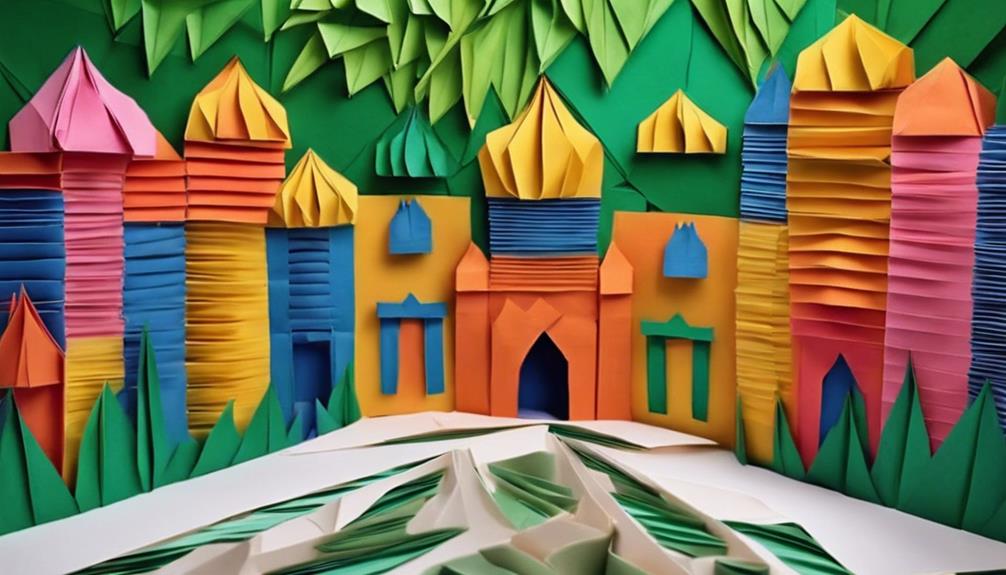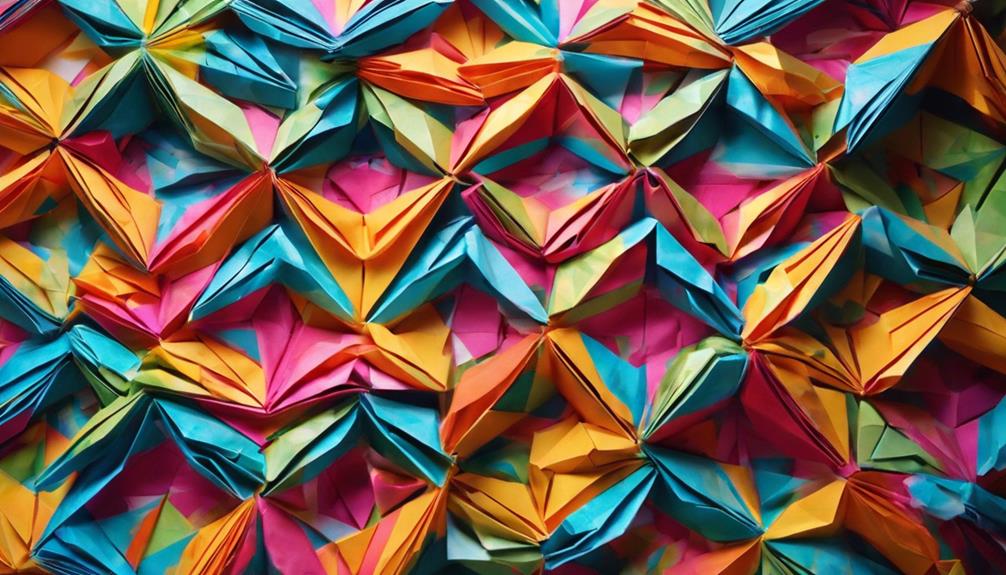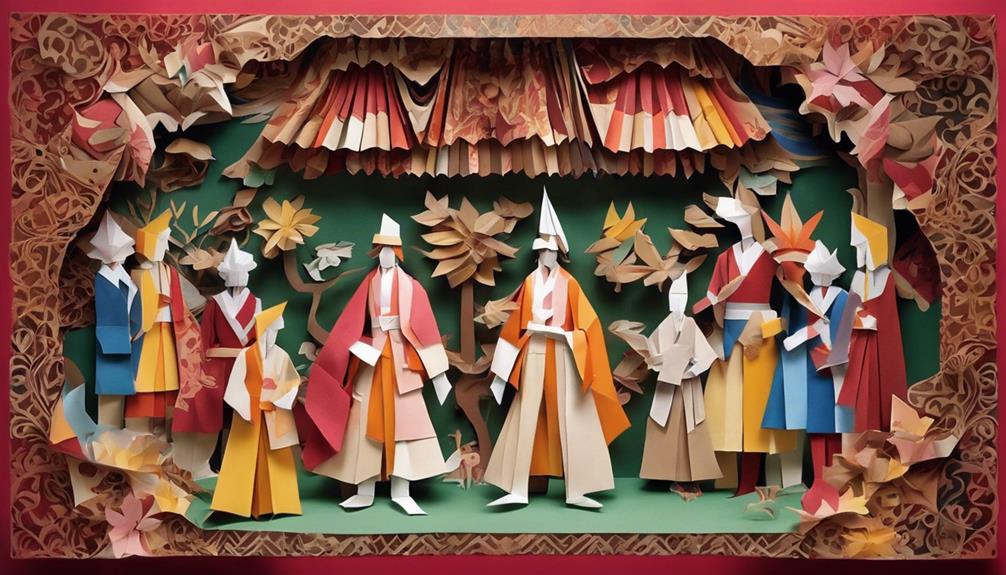Antique Gothic furniture enchants with its spooky allure, drawing fascination from its sinister pasts and eerie aesthetics. The dark wood, intricate details, and symbolic motifs of these pieces create a chilling atmosphere that whispers tales of cursed histories and haunted energies. From malevolent tables with chilling stories to sinister cabinets with dark legends, these antiques evoke a sense of mystery and gothic romance intertwined with historical significance. The mesmerizing blend of intricate carvings and grandeur in Gothic furniture makes it a fascinating yet haunting addition to any collection, showcasing a side of history that is both alluring and unsettling.
Key Takeaways
- Eerie tales of haunted chairs and malevolent tables with dark histories and supernatural energies.
- Sinister origins, chilling stories, and cursed Gothic furniture possessing haunting pasts.
- Encounters with ghostly apparitions, unexplained phenomena, and sinister legends linked to Gothic furniture.
- Dark narratives of antique Gothic furniture carrying cursed energies and mysterious pasts.
- Legends of cursed Gothic furniture, chilling encounters, and eerie happenings haunting possessors.
Origins of Gothic Furniture
Gothic furniture, originating in the Medieval period, is characterized by intricate carvings and dark, ornate designs. Drawing inspiration from architectural elements like pointed arches and quatrefoils, Gothic furniture embodies a sense of grandeur and sophistication. While it's commonly associated with religious symbolism and intricate detailing, Gothic furniture also showcases nature-inspired motifs such as oak leaves, adding a touch of organic beauty to its overall aesthetic.
During the Victorian era, there was a resurgence of interest in Gothic furniture, particularly influenced by French furniture styles. The revival emphasized dramatic and elaborate pieces, showcasing the craftsmanship and ornate designs that defined the Gothic aesthetic. Symbolic motifs like heraldry and animal carvings were commonly featured in these pieces, adding layers of meaning and historical significance to the furniture.
Gothic furniture stands out for its unique blend of artistic expression and architectural influence, making it a timeless and coveted choice for those who appreciate the intricate beauty of historical design.
Characteristics of Antique Gothic Pieces
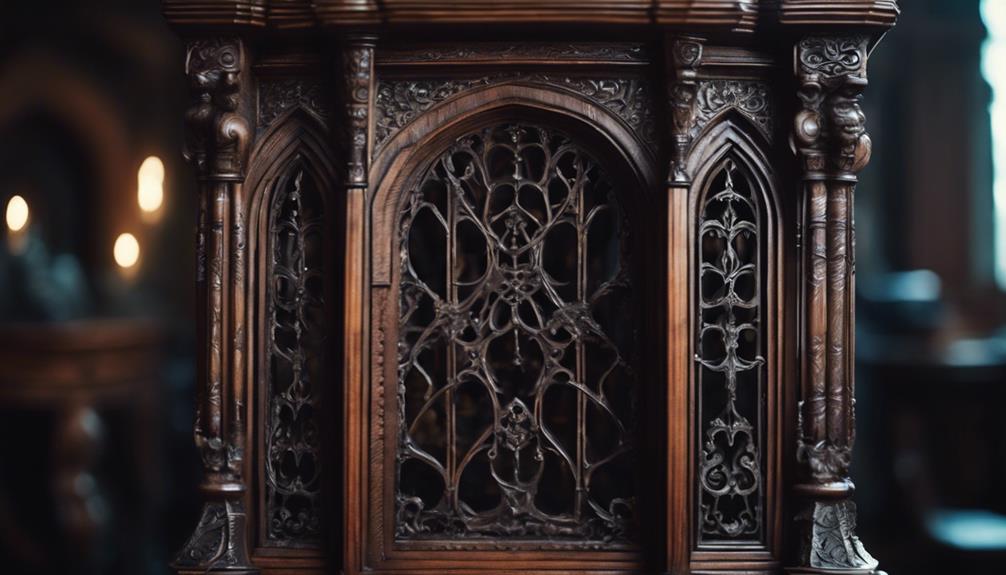
Intricate details, ornate carvings, and dark, dramatic designs define antique Gothic furniture pieces. These characteristics are prevalent in various Gothic furniture items, making them stand out as unique pieces in interior design.
Symbolic motifs such as heraldry, animal carvings, and mythical creatures like basilisks are often incorporated into these pieces, adding a sense of mystery and intrigue to any living room. Gothic furniture from different historical periods, including the Medieval and Renaissance periods, showcases a wide array of styles and influences, each with its own distinct charm.
Materials like oak, walnut, and bronze were commonly utilized in crafting Gothic furniture, not only for their durability but also for the touch of elegance they bring to the pieces.
Additionally, French Antique Furniture styles from the Louis XV and Louis XVI periods have played a significant role in shaping the aesthetics of Gothic furniture, influencing the intricate designs and luxurious feel often found toward the top of these exceptional pieces.
Notorious Gothic Furniture Designers

Several notorious designers in the world of Gothic furniture were recognized for their dark and intricate creations, drawing inspiration from macabre themes and medieval art. Horace Walpole, Charles Locke Eastlake, and the Herter Brothers stand out as prominent figures in the Gothic furniture movement. These designers, known for their distinctive styles, incorporated elements like gargoyles, skulls, and elaborate carvings into their pieces.
Drawing inspiration from Gothic architecture and medieval art, they played an essential role in shaping the Victorian Gothic Revival period. Their furniture pieces, infused with symbolism, heraldry, and intricate details, reflected a fascination with the mysterious and macabre. Through their contributions, these designers popularized dark and ornate furniture styles that became iconic in the 19th century.
The legacy of these notorious Gothic furniture designers lives on through their unique and haunting creations that continue to captivate enthusiasts of Gothic furniture and design.
Haunting Gothic Furniture Styles
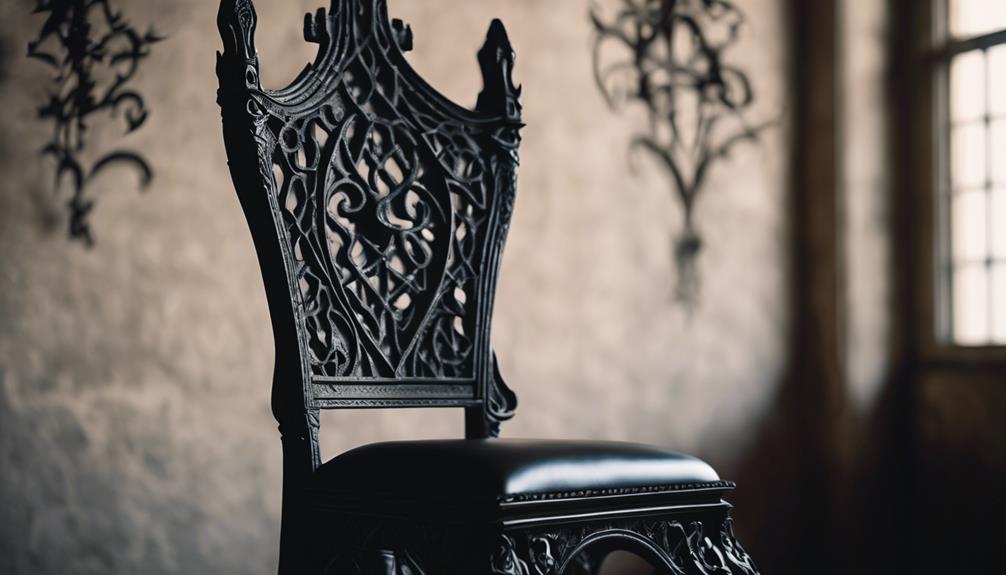
With a mystique that lingers in the shadows, haunting Gothic furniture styles beckon admirers to explore their eerie beauty and intricate craftsmanship. Characterized by intricate details, ornate carvings, and unique design elements, Gothic furniture styles often feature dark wood, symbolic motifs, and elaborate craftsmanship inspired by medieval and Renaissance periods.
These haunting pieces may include mystical symbols, animal motifs, and heraldic emblems, creating a dramatic and eerie aesthetic that evokes a sense of mystery and gothic romance.
Gothic furniture nightmares are sought after for their rich historical significance, artistic beauty, and macabre charm in home decor. The dark allure of these pieces adds a touch of sophistication and intrigue to any space, making them a popular choice for those looking to infuse their interiors with a sense of history and drama.
Tales of Cursed Gothic Furniture
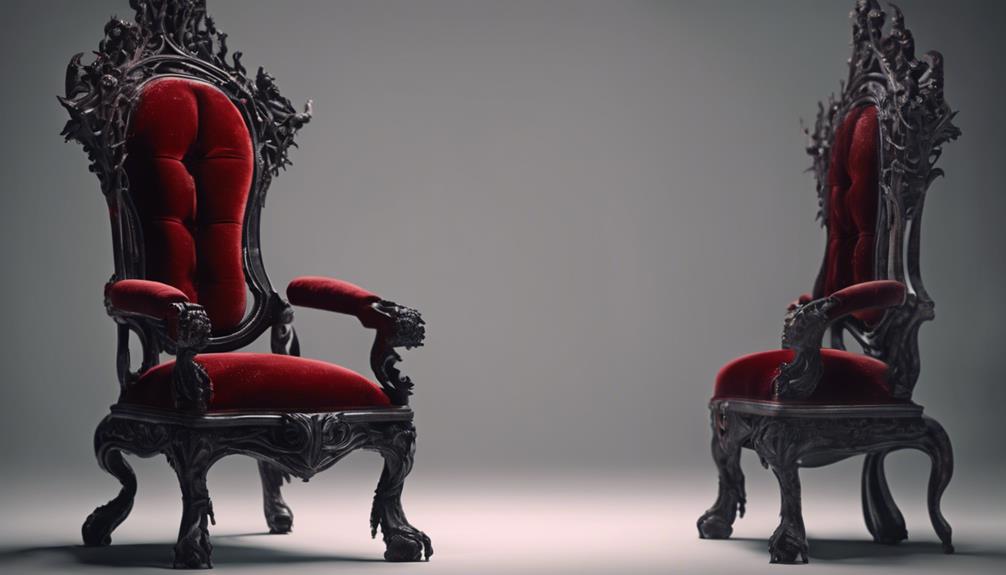
Cursed Gothic furniture has long been entwined with chilling narratives, often rooted in legends of haunted chairs, sinister cabinet origins, and malevolent table stories.
These tales paint a picture of antique furniture imbued with dark energies, capable of bringing misfortune and supernatural experiences to those who come into contact with them.
As the stories of cursed Gothic furniture continue to circulate, they serve as cautionary reminders of the ominous allure and potential dangers that lie within these macabre relics.
Haunted Chair Legends
Legends of haunted chairs infuse the world of Gothic furniture with eerie tales and mysterious occurrences. Stories of possessed chairs, haunted cabinets, and cursed sofas add to the lore of Gothic furniture nightmares.
Folklore surrounding Gothic furniture includes tales of ghostly apparitions, strange sounds, and unexplained phenomena. Many antique Gothic furniture pieces are believed to carry dark energies and supernatural curses in various legends. The chilling history and paranormal experiences associated with haunted chairs contribute to the allure of Gothic furniture nightmares.
- Ghostly apparitions are said to manifest around haunted chairs, leaving witnesses in a state of fear and disbelief.
- Strange sounds, like whispers or creaking noises, are often reported in the vicinity of cursed Gothic furniture, adding to the mystery.
- Unexplained phenomena, such as sudden temperature drops or objects moving on their own, are commonly linked to haunted chairs, perpetuating the belief in their cursed nature.
Sinister Cabinet Origins
Originating from a shadowed past shrouded in mystery, the Sinister Cabinet stands as a chilling example of cursed Gothic furniture. This piece of furniture is adorned with intricate carvings of lizards and winged creatures, reflecting mysterious symbolism. Its design incorporates unique Gothic elements, such as lancet arches and animal motifs, which contribute to its eerie charm. The cabinet showcases heraldry symbols and animal carvings, hinting at a dark and mysterious history. With a fusion of Gothic and Renaissance styles, the cabinet's ornate and enigmatic design intrigues those who dare to gaze upon it. The presence of basilisks and symbolic carvings on the cabinet alludes to a haunting and enigmatic past. Below is a table summarizing the key features of the Sinister Cabinet:
| Key Features | Description |
|---|---|
| Carvings of lizards and creatures | Reflects mysterious symbolism |
| Gothic elements | Includes lancet arches and animal motifs |
| Heraldry symbols | Showcased on the cabinet, adding to its enigmatic history |
| Gothic-Renaissance fusion | Design combines both styles, creating a unique and eerie charm |
Malevolent Table Stories
Within the dimly lit corridors of ancient castles and eerie manors, tales abound of malevolent tables exuding a sinister presence. These cursed Gothic furniture pieces have become the center of chilling stories, with haunted tables and sinister energies lurking within their intricate designs.
Dark legends surround these malevolent tables, bringing nightmares to their owners and visitors alike. Mysterious occurrences and supernatural events are often linked to these cursed Gothic tables, adding to their eerie reputation. The intriguing narratives of these tables reveal sinister pasts that continue to haunt those who possess them.
Stories recount eerie encounters with cursed Gothic furniture.
Haunted tables and sinister energies lurk within antique Gothic furniture.
Dark legends surround malevolent tables, bringing nightmares to their owners.
Modern Gothic Furniture Trends
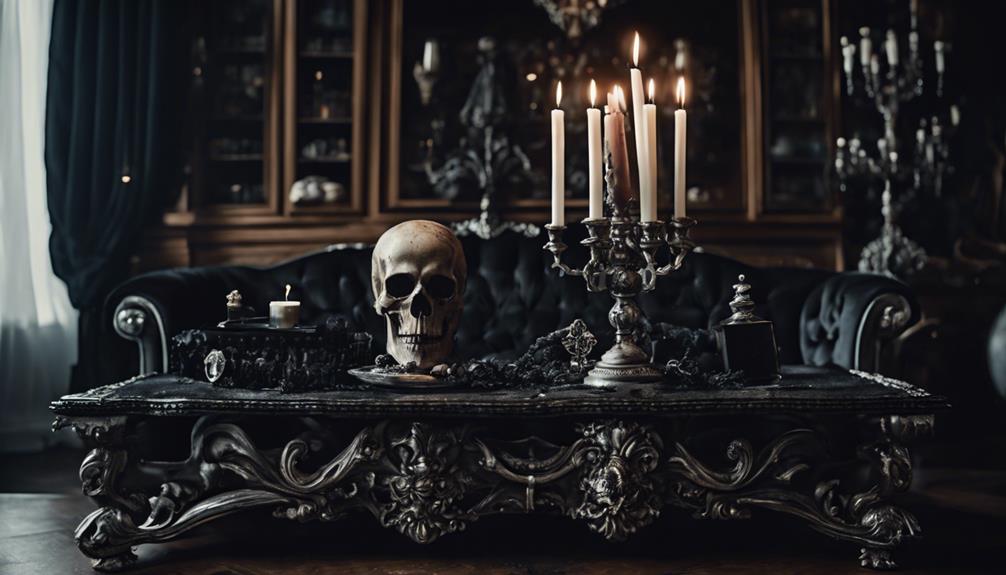
Incorporating dark color palettes, ornate detailing, and dramatic silhouettes, modern Gothic furniture trends have evolved to blend traditional elements with sleek, minimalist designs for a contemporary twist. Popular in contemporary Gothic furniture are materials like black wood, velvet upholstery, and metal accents, which lend a luxurious and edgy appearance to the pieces. Inspired by medieval Gothic architecture, modern Gothic furniture often boasts intricate carvings, pointed arches, and elaborate patterns, adding a touch of historical grandeur to modern interiors.
The current Gothic furniture trends aim to create a dark and moody ambiance while infusing elements of elegance and sophistication for a truly unique and stylish aesthetic. By combining traditional Gothic features with modern design principles, these pieces offer a fresh take on the classic Gothic style, appealing to those who appreciate the fusion of the old and the new in furniture design.
Frequently Asked Questions
What Is Gothic Furniture Style Made From?
Gothic furniture style is typically crafted from dark, heavy woods like oak, walnut, and mahogany, creating a dramatic and mysterious aesthetic.
Intricate carvings and ornate details are common, reflecting Gothic architecture's emphasis on elaborate decoration.
Motifs such as quatrefoils, trefoils, and animal carvings like gargoyles and dragons are often featured for a mystical touch.
Metal accents like wrought iron or bronze add a medieval flair, enhancing the unique and ornamental appeal of Gothic furniture pieces.
What Are the Characteristics of Gothic Revival Furniture?
Gothic Revival furniture is known for its emphasis on medieval and Renaissance design elements, such as pointed arches and intricate carvings. Commonly crafted from dark woods like oak and walnut, these pieces often feature metal fittings and elaborate detailing.
Symbolic motifs like gargoyles, dragons, and heraldic symbols are prevalent, reflecting a fascination with the supernatural and historical themes. This style, popular in the 19th century, evokes a sense of mystery, grandeur, and Gothic romanticism in interior design.
What Are Antique Dressers Made Of?
Antique dressers are typically crafted from high-quality woods like oak, walnut, pine, and mahogany, often featuring intricate carvings and ornate details. Some may include exotic wood veneers like rosewood for added luxury.
The craftsmanship of these dressers commonly showcases dovetail joints, hand-carved motifs, and elegant hardware. Known for durability and timeless appeal, antique dressers embody unique design elements reflecting the artistry of past eras.
How to Identify Gothic Furniture?
To identify Gothic furniture, look for intricate details like:
- Pointed arches
- Quatrefoils
- Animal motifs such as lizards or winged creatures
Materials like oak and walnut, along with elaborate carvings, are common in authentic pieces. Unique design elements like lancet arches and Moorish influences can also be indicative.
These features, combined with ornate carvings and heraldic symbols, help in accurately recognizing Gothic furniture styles.
Conclusion
To sum up, antique Gothic furniture may have a reputation for being nightmarish, but in reality, it's a fascinating and intricate style that has stood the test of time.
By understanding the origins, characteristics, designers, and styles of Gothic furniture, one can appreciate the beauty and craftsmanship behind these pieces.
Despite tales of cursed furniture, modern Gothic trends continue to captivate and inspire, showcasing the enduring allure of this unique and haunting style.

